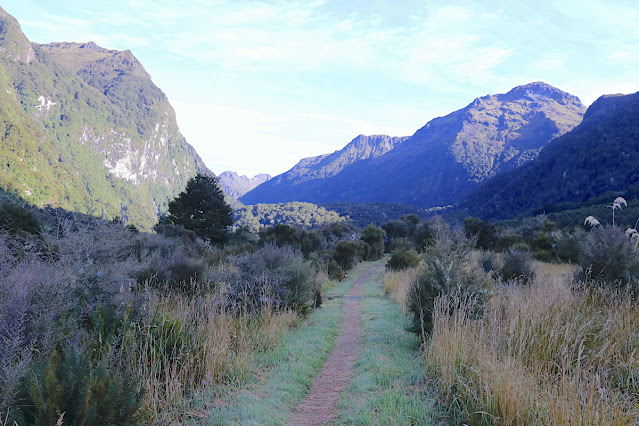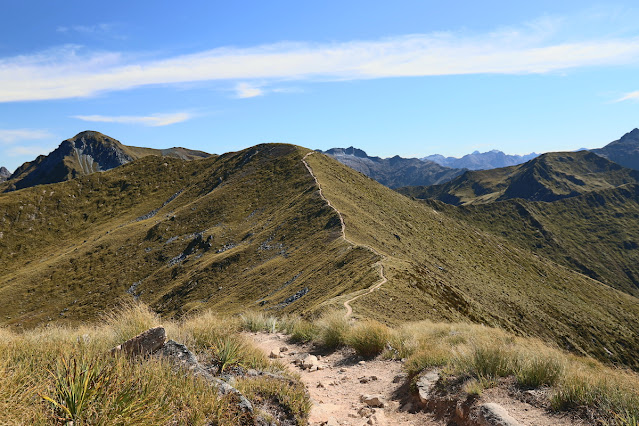Day 3
After a hard day yesterday, the walk today was easy, 16.2km in around 6 hours. Down through the beech forest following the Iris Burn.
The track from the Iris Burn Hut starts off through dense forest and openeds out a little further down as the following two photos show.
One noticeable difference from the Paparoa Track were the relative abundance of birds. Traps are set out approximately every 400m and judging by the odour near some, are successful in dealing with predators.
Birds heard during the tramp: Kiwi, ruru (morepork), kaka
Birds seen: Piwakawaka (fantail), Korimako (bellbird), Matata (Fernbird) , Kereru (Wood pigeon), Toutouwai (NZ Robin), Titpounamu (Rifleman), Miromiro (Tomtit).
 |
| Friendly robin |
 |
| Less than 50cm away on my camera bag |
I did not carry any other lenses with me so there are no photos of other birds. It was enough to carry my DSLR and 15-85mm lens without any extra weight.
On this day and the next, there were many trees which had fallen or been blown over. Part of the natural cycle in the forest involves recycling of nutrients so that a healthy ecosystem survives. At the time I walked the Kepler, Southland and the Fiordland National Park was is a very dry almost drought like situation. The only readily seen fungus was the following species growing the side of a dead trees.
 |
| Millions of browns spores released to catch in the wind and spread to other hosts. |
 |
| Hollow log |
 |
| Emerging fungus |
 |
| Common fungi - name? |
The hut on the shores of the lake was a welcome sign after a pleasant day's walk.
 |
| Moturau Hut |
The hut warden Phil, gave us an interesting history of the lake and the building of the power station for the aluminium smelter in bluff. This took place down on the lake shore in front of the hut where the developing sunset added extra interest to cap off the day. |
| Late evening, Lake Manapouri |
 |
| Lake Manapouri sunset |
The alarm was set for early next morning!
Day 4Today Ian and I aimed to be home before 6 pm.
After an early breakfast and pack up we left the hut just before 8:00am, before sunrise. We had a 90 minute walk to get to the car at Rainbow Reach by 9:30
 |
| Waiau River |
Because of a the lack of rain, both lakes were at very low levels and the flow in the river had been cutback to 85 cumecs.Back to the car and short drive around to have a shower and change into fresh clothes it was off home, 520 km away.
 |
| Lunch stop, Kawarau River at Roaring Meg |












































